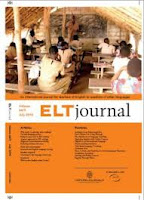 Journalism Today provides students with the instruction and tools to develop skills in the production of print and electronic journalistic media. Reading, writing, speaking, listening, viewing, analyzing, technology, planning, and production skills are integrated throughout the lessons.
Journalism Today provides students with the instruction and tools to develop skills in the production of print and electronic journalistic media. Reading, writing, speaking, listening, viewing, analyzing, technology, planning, and production skills are integrated throughout the lessons.
Features include writing assignments with specific strategies to help students work through each step in the writing process; examples from student newspapers and yearbooks throughout the country; journalists' testimonies about their career paths with advice for students interested in a career in journalism; and a professional guide to consistency in punctuation, abbreviation, and capitalization in their school publications.
Reading age for native speakers: High School students
CONTENTS
Introduction
Section One: Journalism in a Democracy
Chapter 1 - Looking Back: The History of American Media
Chapter 2 - Meeting Ethical and Legal Responsibilities
Section Two: Gathering News for the School Newspaper
Chapter 3 - Deciding What is News
Chapter 4 - Organizing the Staff to Capture the News
Chapter 5 - Making the Interview Work
Section Three: Writing and Delivering the News
Chapter 6 - Writing News Story Leads
Chapter 7 - Writing News Stories and Headlines
Chapter 8 - Handling Quotes Fairly and Accurately
Chapter 9 - Doing In-Depth Reporting
Chapter 10 - Design and Layout
Section Four: Writing Features, Sports, and Editorials
Chapter 11 - Writing Feature Stories
Chapter 12 - Writing Sports Stories
Chapter 13 - Writing for the Editorial Page
Section Five: Other Aspects of Scholastic Journalism
Chapter 14 - Producing the Yearbook
Chapter 15 - Writing for Radio and Television
Chapter 16 - Understanding and Using Public Relations
Chapter 17 - Handling Finances: Advertising and Business
Section Six: Photography
Chapter 18 - Taking and Using Effective Photographs
Chapter 19 - Understanding Technical Aspects of Photography
Section Seven: Computers and Desktop Publishing
Chapter 20 - The Impact of Technology
TIME to Write
Stylebook
Appendix
 ELT Journal is a quarterly publication for all those involved in the field of teaching English as a second or foreign language.
ELT Journal is a quarterly publication for all those involved in the field of teaching English as a second or foreign language.






















